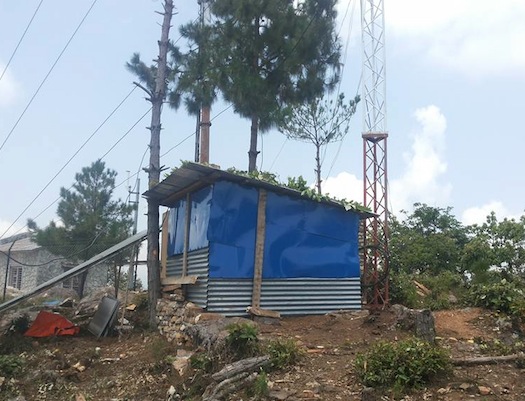On Saturday April 25, 2015 a devastating earthquake of 7.8 magnitude destroyed over 62 community radio stations from 32 districts in Nepal, There was massive loss of life and properties. Community radio stepped in to help and is still assisting in the recovery efforts today.
Thousands of community radio journalists and hundreds of radio stations were affected by the massive earthquake. But no matter how badly they were affected, the survivors from community radio stations didn’t lose hope and began to help and support other affected people.
They brought their equipment and organized programs in open areas in various affected districts to help victims who needed information.
Throughout this period the community reporters got positive and good support from the different agencies of government, political leaders, social workers, and NGOs and they also received good support from the local community.
The community stations helped the affected people to communicate with their families, relatives and friends staying nationally and internationally.
During this painful moment, most of the affected local radio teams had to abandon their stations and adopt temporary broadcasting arrangements, but they continued their reporting and performed their job well to interact with victims.
The Government still needs to work hard on rebuilding and reconstruction of infrastructures so that the work of the community will be supported at national level. Meanwhile community radios in collaboration with local groups are continuing to work for the betterment of the future.
The photos below show the reconstruction of Radio Marsyangdi after the earthquake.



Manager of Radio Marsyangdi, Mina Gurung told AsiaRadioToday:
“We were off air for 2 days then we made a temporary station and brought our equipment there. Still we are in that temporary building.
“I felt scared when the earthquake hit. It was hard to reach the transmitter site from our station in the town, so when it finished we walked for two hours to get to the centre of the jungle to build that temporary house for our studio and transmitter.”
 Presenting details of just how important community radio was during and after the earthquake, Executive Director of the Community Radio umbrella body ACORAB, RC Lamichhane (pictured) said this week:
Presenting details of just how important community radio was during and after the earthquake, Executive Director of the Community Radio umbrella body ACORAB, RC Lamichhane (pictured) said this week:
“ACORAB was active after the earthquake. There were 1000 deaths, 20,000 injured and so much infrastructure damaged.
“The local information system collapsed. We saw that communities needed to have their community ststions back on air so we did a needs assessment and restarted as many stations as possible. We broadcast special programs to help people after the earthquake.
“When their homes were destroyed, people also lost their radios, so we worked with UNICEF and disaster relief organisations to give people new radios. We also did training for broadcasters about how to cover the disaster and hep people recover.
“We literally broadcast from the field, there were no buildings. We broadcast from tents and the open air.”

